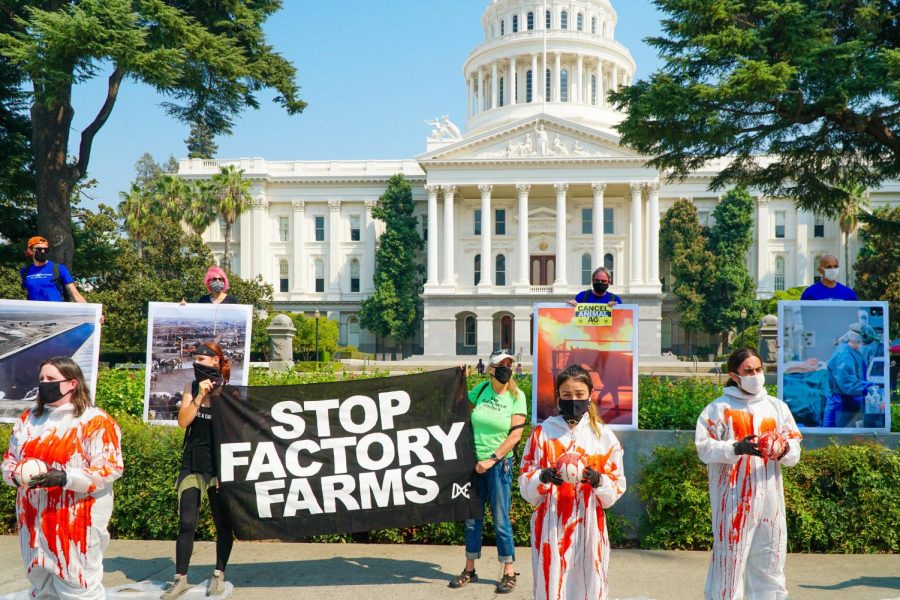The realities of factory farms
What are they, why are they bad, and how can we help end them?
Awareness is the first step to change
Most of us probably have some familiarity with the term “factory farming.” Simply put, factory farms consist of extreme confinement of livestock for commercial use. The definition sounds simple, but the realities of it run much deeper. These farms are cruel, inhumane and horrible for the environment.
Factory farms were designed to use as little space and resources as possible, require less maintenance and allow for quick management of animals. The goal of factory farms is simple: maximize profits and keep up with the high demand for more animal products.
If factory farming is the only way to keep up with consumption demands and maximize profits for corporations, what makes it so terrible? The animals living in these farms suffer harsh confinement, various bodily mutilations and spend their short lives entirely indoors. Ultimately, these animals have virtually no freedom or ability to carry out their natural processes.
Aside from poor living situations and harmful processes, animals are also forced to grow at alarming rates, up to three times faster than natural. This is due to selective breeding and the administration of weight-gaining drugs in feed. Genetic manipulations are carried out to attract consumers, but many animals suffer in the process.
You may think most of the food you’re purchasing does not contribute to this industry, but the upsetting reality is 99% of U.S. farmed animals live on factory farms. If the horrible implications of animal cruelty alone are not enough to make you reconsider where you purchase your animal products, what about the impact on the environment?
Factory farms have a negative impact on the Earth as they release huge amounts of methane gas and waste into the air, land and sea. Over 37% of methane emissions are a result of factory farms, which have a global warming potential 20 times higher than carbon dioxide. If air and water pollution don’t catch your attention, how about the clearing of over 260 million acres of forests?
Now that we know what factory farming is and why it is both inhumane and unsustainable, it is important to look at some solutions. While I would encourage vegetarianism or veganism to everyone, I realize this is not realistic nor practical for some. Some people love meat and some cannot medically or financially afford to live without it.
That being said, here are some other practical solutions to reduce factory farming.
Purchase meat locally
By purchasing your animal products from small, local farms, you can ask questions about how the animals were raised and how waste was disposed of. That way you can make sure your meat is not only sustainable and hormone free, but also more humanely raised.
Sign petitions
There are many well organized and thoughtfully created petitions out there fighting against factory farming. This is a simple, low effort step that anyone can take right now from home. You can find information on relevant petitions here.
Reduce your intake of unsustainable meats
Maybe you’re not willing to cut meat out of your diet entirely, but reducing some of your consumption of unsustainable meats could go a long way. Lamb, beef and pork are the most harmful to the environment. If you are looking for the most environmentally friendly choice of meat, chicken should be your go-to.
Obviously factory farming is not going to stop overnight, but if enough people are educated and become conscious of their habits, combined efforts can constitute a change. This not only will help the lives of many suffering animals, but also foster sustainability and wellness of the planet.
Snyder can be reached at [email protected].


